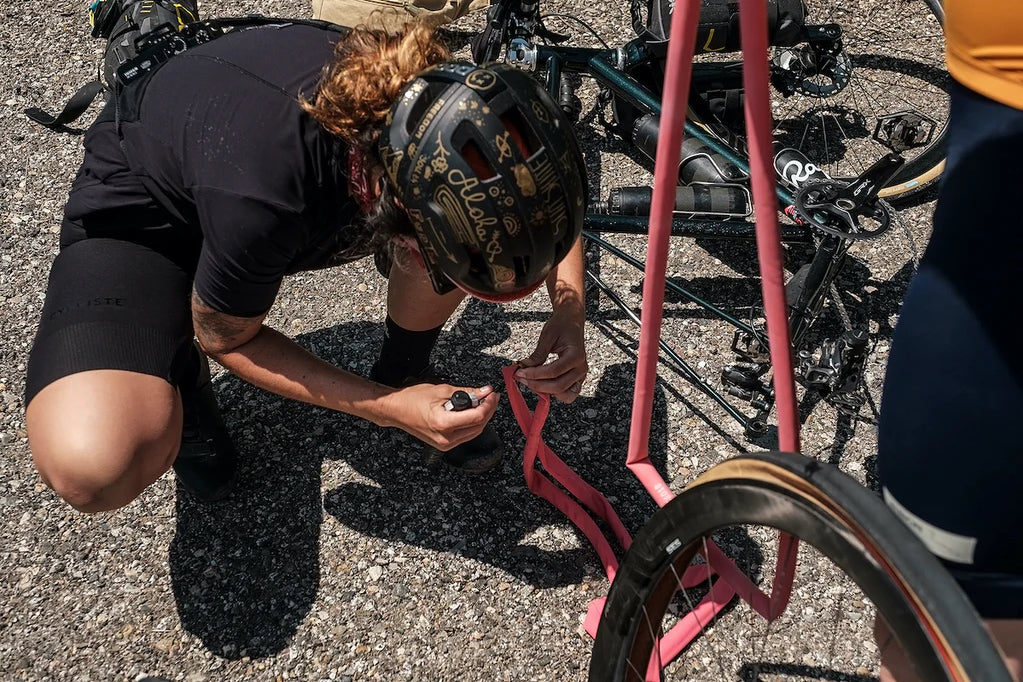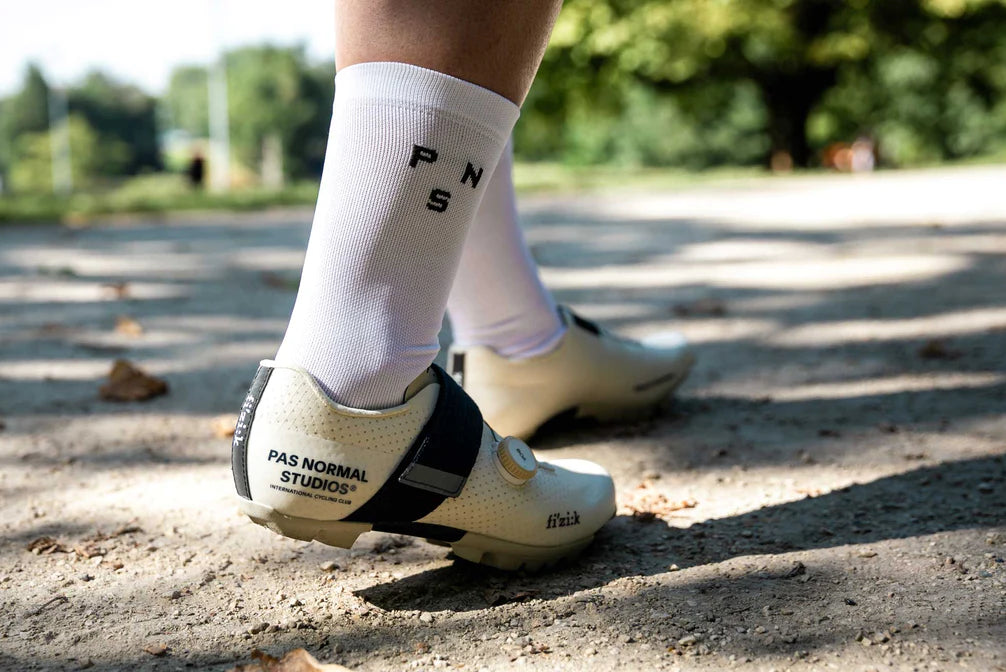As the days lengthen, the mercury rises and the orange line on your Strava Monthly Fitness graph heads upwards, thoughts will likely be turning towards a more ambitious cycling trip that lifts you out of your usual segments and pits you and your bike against more challenging terrain and distances, perhaps taking on some iconic climbs and pedalling through places that are legendary in cycling culture. Naturally we would suggest looking at Rouleur Travel first of all. In addition to our bespoke events tailored for corporate and private groups, we offer five annual Rouleur Club events, with each adventure limited to only 10 participants per trip for the ultimate cycling experience.
If you’re planning a multi-day road cycling trip with a group, it’s crucial for the flow of the ride, your own and the group’s safety as well as for practical reasons that your bike is set up for the purpose and that you’re carrying the right kit with you. Tristram Kelly is a director of Rouleur Travel who has managed cycling groups on the Continent from ultra-novice level up to super experienced. He’s an ex-military logistician and has run expeditions in Afghanistan, Pakistan, Nepal and across Africa. Here are his tips for getting your bike and kit ready for environments perhaps not quite as hostile as those, but nonetheless terrain that might present a different set of challenges.
Punctures
“The biggest issue we have on a trip is punctures,” he says. “If we’re in the Alps based somewhere like Chamonix, going up a mountain pass and coming back down, the roads are pretty good, but if you’re riding London to Paris for example where the roads can be bad, we get an awful lot. We support everybody and the ride leaders will get them going again quickly, but for example if two people ride through glass and both puncture, one will just be standing there waiting while the other’s tube is being changed, so we tell everyone to carry inner tubes so that they can start changing their own tyre.”
Would tubeless not help solve the puncture problem? “If you were to ask my mechanic, he loathes tubeless,” says Kelly. “In a mountain bike setting it’s fine because you’re riding 25 or 28psi and it will reseal, but on a road bike even with a 30mm tyre at 60-65psi there’s no guarantee it will seal. So if you puncture and you can’t seal the hole - and a lot of people find it hard to successfully plug a hole, select the righth plug size and so on – it’s game over. We’d have to call a mechanic who would probably replace the tyre and put a tube in it. It slightly depends on where we’re going, but for California where the roads are bad I say to everyone, please, just ride tubes. In the Alps we wouldn’t be so prescriptive because the roads are good.”

Photo: Tomas Montes
What about the tyres themselves? Heavier tyres? “On a premium trip people will arrive with lightweight racing tyres and that’s a disaster. Geraint Thomas came with us last year from London to Lyon – it was a rugby head injury charity ride and we cycled down to Lyon for Wales v Australia in the Rugby World Cup. Everyone was looking at G – what ratios is he using, what tyres has he got on? It was the middle of summer and he was riding Continental GP 4-Season 32mm with tubes. When you’re not racing, use a more robust tyre so you can enjoy the ride and not worry about puncturing.”
With tyres covered, the next question is gear ratios – is anything different required? “I’ve never seen people use special ratios for a trip. Most of the time modern 12-speed cassettes have low enough bottom gears – and we’re not racing.”
What to carry
What clothing to pack deserves its own feature, so here we’ll look next at what to carry, starting with the humble bidon. “A lot of new riders might still be fit – if they have a running background for example – but might not have the skills yet to do things while they’re in a group, like taking a bottle out of the cage and drinking from it. So you can be snobby about CamelBaks but we’re totally cool with them. There should be no stigma around it.”

Photo: Lezyne
Kit can be carried in the saddle pack, in pockets or in a bar bag. “'Sausage bags' are quite popular now, it’s easy to access things with them and they became quite hipsterish. But make sure you have space somewhere for a minipump. Gas canisters are great but ultimately you’ll only take one or two and if there’s a group of you where no one has a minipump you might be in trouble.”
Kelly earlier stressed the importance of riders carrying their own inner tubes and being self-reliant in puncture situations. What sort of inner tubes does he recommend? “You could go with traditional butyl inner tubes, which are quite bulky, versus TPU or latex. In the same space you need for two traditional butyl tubes, you could get eight TPU tubes. And they’ll be lighter too. I’m saying for the Rouleur Travel California trip (April 16-20) please put in five or six TPU. As for valve length. I say to everyone just buy the long 80mm valves since 40 or 50mm carbon rims are the norm.” Two tyre levers of course: “The Park Tool Steel Core with metal reinforcement are good. You’ve just got to be careful on carbon rims but they’re super strong.”
Quick Link/Powerlink for joining a chain? “We never recommend it. I don’t think I’ve seen a single snapped chain.” There’s one drivetrain-related spare, however, that Kelly says is essential. “The one piece of equipment we insist on is a spare rear mech hanger. If you’re in California and you’re on a European bike that’s a couple of years old there’s no way they’ll have that rear mech hanger in America. Even in France it’s not easy unless you’re somewhere like Bedouin. If you fall off, bend it and you don’t have a spare, it’s game over. We can bodge it, bend it back but it’s not ideal.”
Lube your chain
As for multitools, Kelly recommends a standard one with no need for a chain tool. Additionally, he says, take a little bottle of lube. “If it rains, unless you’re putting on a thick wet lube, it’s just going to wash off and get very noisy especially if you’re using a waxed chain, which a lot of people are now.” Kelly says he insists on a rear daytime running light for increased visibility but a front is optional.
Do you need a first aid kit? “Unless you know what you’re doing you could end up with stuff that’s useless and that you don’t need. A couple of plasters might not cover it. I carry a first aid kit and we carry them in every vehicle. But do take suncream. We use an enormous amount on these trips because skin exposed to the sun for hours it can become really uncomfortable. We see a lot of burnt forearms. So from this year we’re going to give people a little tube of factor 50.”
Rain jacket? “There’s super light and packable or chunky and rigid. The latter you’re wearing that all day because you’ve got nowhere to put it. The lightweight one might not give you the best rain protection but you can easily stow it. Gore Shakedry is the best in my experience. It’s not made any more [due to the PFAS ‘forever chemicals’ used in the fabric] but if you can get your hands on one of those, if you think you’re going to be cycling in the rain there’s nothing that comes close.”

Photos: Alessandra Bucci
As for shoes: “I wear SPD shoes and most of the ride leaders do. You’re getting off and walking into a cafe fairly regularly. Gravel shoes are so good now – if you want to wear ice white you can get them. They look like road shoes.”
And finally, navigation. “It’s surprising how many people will take on a long adventure in places they don’t know without a GPS device. So we insist that everyone has the what3words app on their phone. It’s free and it’s incredible. It’s used by the emergency services. The entire planet is mapped into squares of about three metres. And every one of those squares has three unique words. If you want to give someone an accurate description of who you are you can just give them the three words. Rather than send me a pin, you can simply ask, what are your what3words? You can’t insist on people having a GPS computer but what3words is free on your phone. Rouleur has just done a deal with Wahoo and they’re giving us a fleet of head units to give out on trips. We’ll preload them with routes.”
Upcoming Rouleur Travel trips as well as California (April 16-20, 600km) include Ultimate French Alps (May 23-26, 400km) and Ultimate Swiss and Italian Alps (August 22-25, 270km) or we can build bespoke corporate, charity, or private challenge trips for groups from 1-100.
Tristram Kelly's takeaways
1. Take multiple TPU tubes with you (and avoid tubeless unless you know you'll be on smooth roads)
2. Run heavier tyres – no lightweight racing tyres again, unless roads are good
3. Bring a spare rear mech hanger, tyre levers and small bottle of lube
4. Fit a rear daytime running light
5. Packable rain jackets that you can stash are preferable
6. Wear SPD/gravel shoes
7. Use the what3words app if you're not using a GPS device or don't have the route on it
8. Slap on the factor 50






























